Duels Drills Used by Pros: Micro-Scenarios to Sharpen Aim
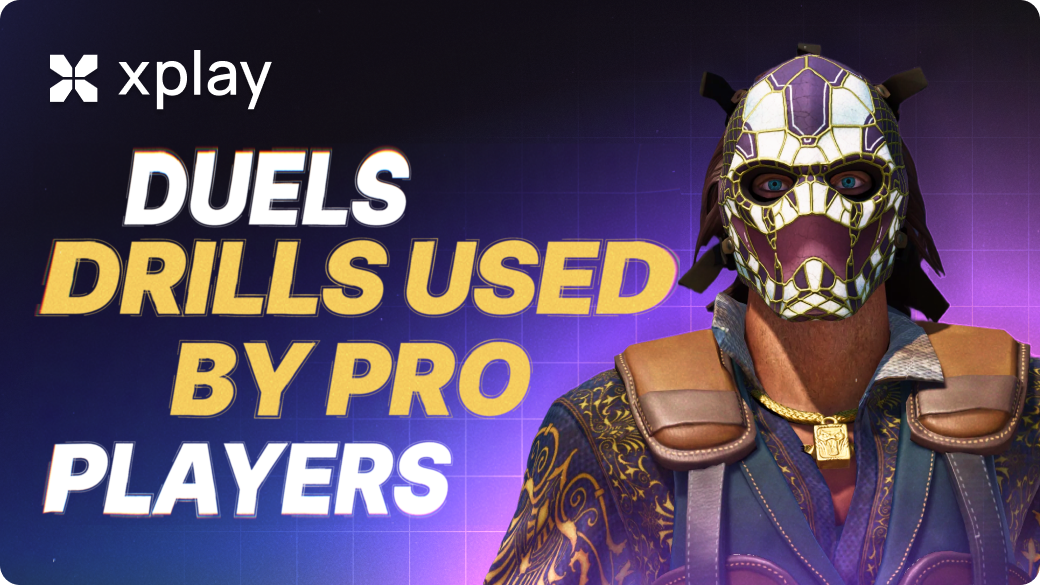
TL;DR
Duels drills are short 1v1 micro-scenarios designed to train your aim, timing, and movement under conditions that closely mimic real matches.
- Jiggle peek: a quick pixel-level peek to gather info or take a bite of damage, especially effective against AWP.
- Shoulder peek: a minimal shoulder peek for a safe shot bite and to trick your opponent.
- Wide vs. close peeking: a wide peek throws off your enemy’s crosshair and works well for aggression, while a narrow peek is safer for information gathering and checking corners.
- Crosshair placement: keep your crosshair at head level in advance and use micro-flicks for fast, precise shooting.
- Counter-strafe: stopping instantly after moving lets you fire accurately with the first shot.
- Workshop maps and 1v1 arenas: the best way to practice all micro-scenarios on popular maps like Mirage, Inferno, and Dust2.
- Pro methodology: combines micro-scenarios, deathmatch, and real matches to transfer skills effectively into live games.
What Is a Duel in CS2
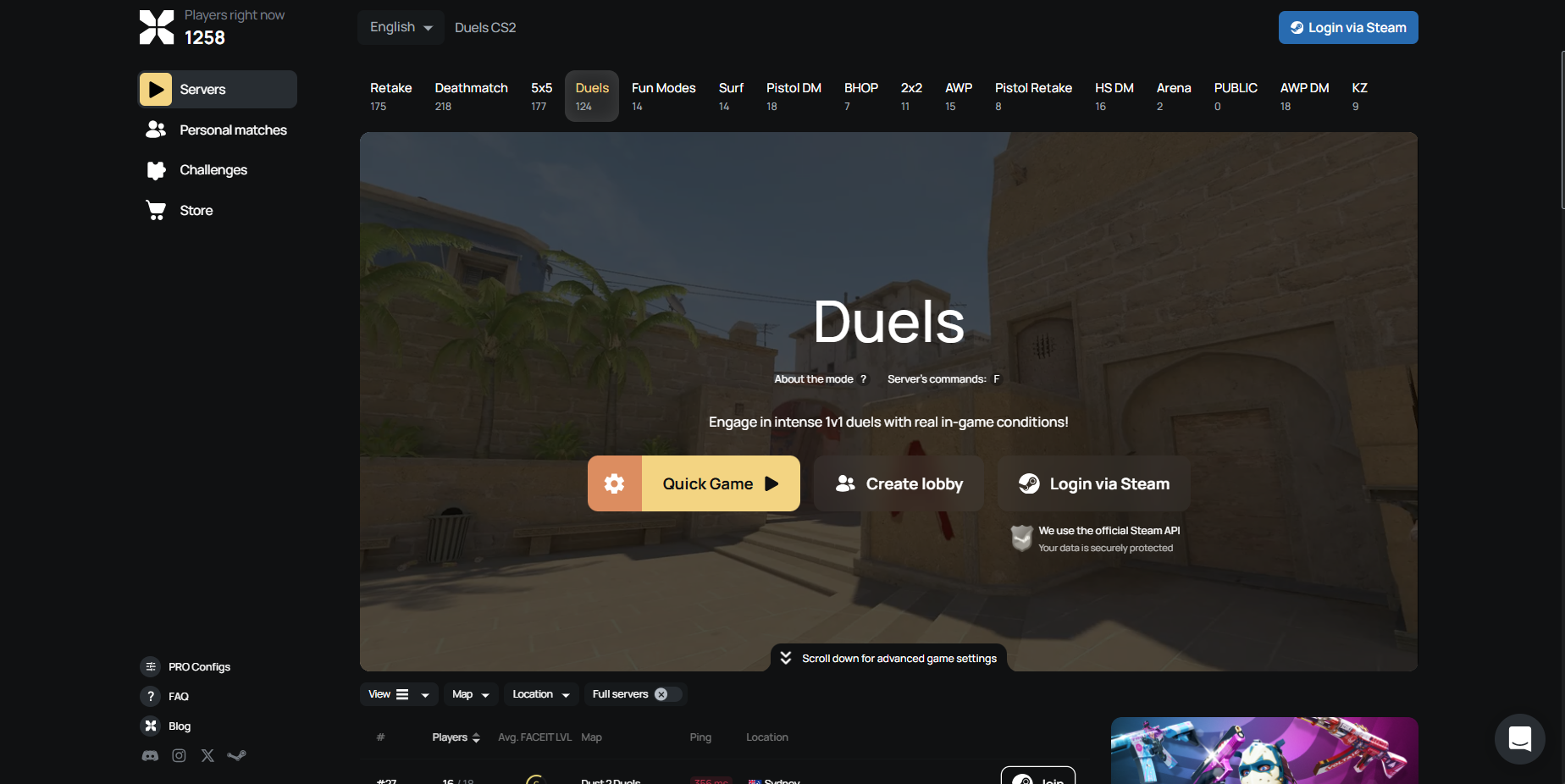
A duel in CS2 is a short, highly concentrated 1v1 firefight where two players face off under conditions that closely mimic real gameplay.
Unlike regular bot shooting or spray practice, a duel requires the simultaneous use of multiple skills: movement, aiming, reading your opponent’s position, timing control, and reacting to sudden target appearances.
These are mini-situations that occur repeatedly in matches — peeking from corners, counter-peeking, holding positions, or trying to win a trade.
On xplay.gg, you can find servers specifically dedicated to 1v1 aim training. Check the article for a guide on how to join community servers.
Why 1v1 Micro-Scenarios Are More Important Than Regular Bot Shooting
Bot shooting is useful, but it mainly develops basic mechanics — crosshair control, recoil management, and flicks on static targets. Duels and micro-scenarios are much closer to real gameplay because:
- The target moves unpredictably, just like a real player.
- Positions and angles constantly change, forcing you to think rather than shoot mechanically.
- Stress factors are included, similar to matchmaking or competitive tournaments.
- You have to make decisions, not just aim at a model.
That’s why 1v1 situations develop real in-game aim — the ability to hit when it truly matters.
How Duels Improve Muscle Memory, Reaction, and Peek Timing in CS2
Duels drills create repeated in-game sequences: peek → react → shoot → adjust → move. This chain of actions builds strong muscle memory and makes movements almost automatic.
- Muscle memory: Constantly repeating drills from the same angles reinforces the correct speed and amplitude of flicks, the stopping point during counter-strafing, and precise crosshair positioning.
- Reaction: 1v1 situations demand instant responses: see the model → land the first accurate shot → react to the opponent’s strafe or peek. This kind of reaction can’t be trained on bots, where everything is predictable.
- Peek timing: Peeks become “intentional.” Players learn to step out exactly when the opponent is unprepared, catching them in motion or off-timing. This is a fundamental skill in CS2.
In the end, duels perfectly simulate real in-game encounters and provide the fastest improvement in practical aim — not just mechanical aim, but real, match-ready aiming skills — along with a deeper sense of gameplay.
Exercises to Improve Aim in 1v1 Games
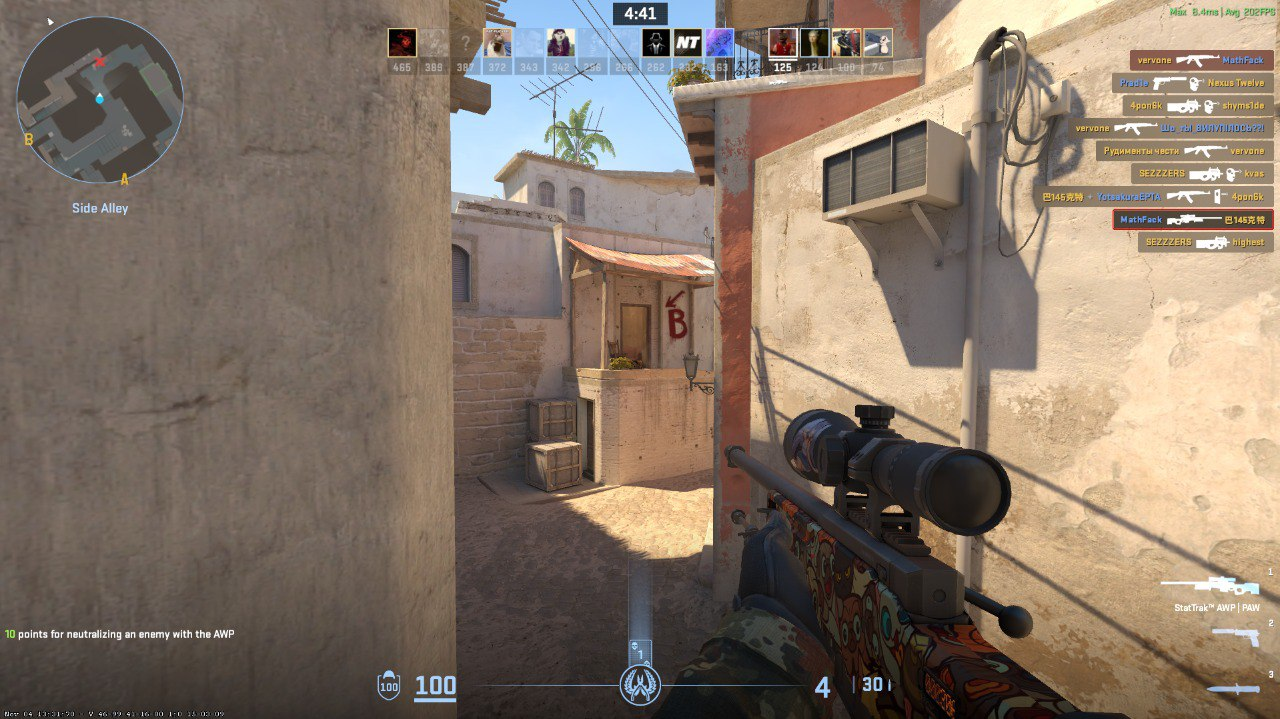
All essential exercises fall into three categories: peeks, crosshair placement, and movement — including strafes and counter-strafes.
For successful practice and gameplay, you need low-ping servers like those on xplay.gg. For more details, see the article CS2 Low-Ping Servers: How to Pick the Nearest Region.
Jiggle-Peek Duel
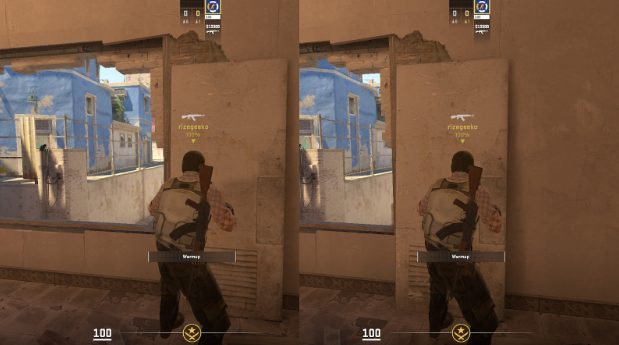
The jiggle peek is one of the key movement tools in CS2. Its purpose is to gather information, bait a shot, or check an angle without exposing yourself to real risk. Essentially, it’s the art of short, controlled strafes.
A proper jiggle peek is precise and controlled, designed to break your opponent’s timing, throw off their crosshair, and force them to react first.
How to Jiggle Correctly in CS2:
- Stand as close as possible to cover — a box, wall, or door.
- Quickly tap A or D to slightly show your shoulder or part of your model.
- Immediately tap the opposite key to return to cover.
Use jiggle peeks for:
- Baiting a sniper shot
- Checking an angle without fully exposing yourself
- Gathering positional information
- Setting up pre-fires for the opponent’s expected location
This technique is especially effective against AWPs: if a sniper takes a “dummy” shot at your jiggle peek, they’ll be on a long reload, giving you space to push or peek aggressively.
Shoulder Peek
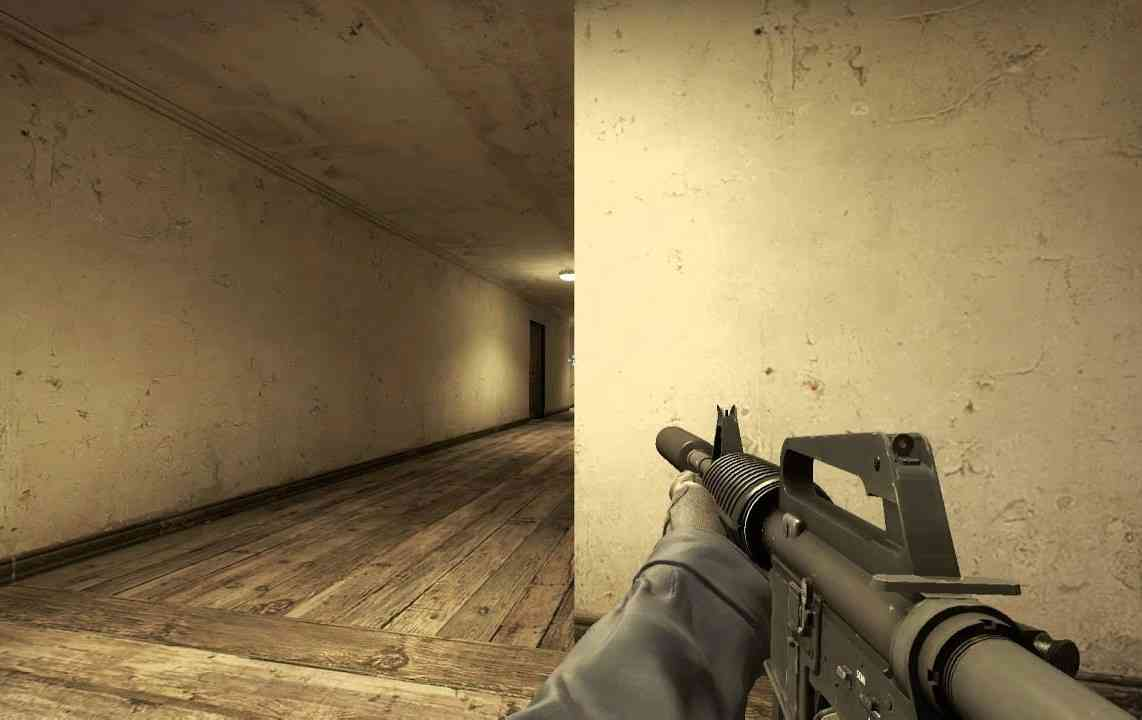
The shoulder peek is a more subtle and safer variation of the jiggle peek. Instead of showing part of your head or torso, you only reveal the edge of your shoulder or weapon, forcing your opponent to shoot or react while staying mostly safe. This micro-movement relies on precision, timing, and mind games.
In CS2, where hitboxes are more precise and animations smoother, shoulder peeks have become even more valuable. With peek advantage and the sub-tick system, you can safely bait shots and gather information without fully exposing yourself to fire.
How to Perform a Shoulder Peek Correctly:
- Stand close to a corner or wall.
- Slightly tap towards the exit (A or D), showing only your shoulder or weapon model.
- Immediately return to cover, giving the opponent no time to aim.
- Repeat 1–2 times if necessary — but don’t overuse it to avoid becoming predictable.
When Shoulder Peeks Are Especially Useful:
- AWP checks: Minimal movement safely baits a sniper shot.
- Forcing a shot before taking the site: If the sniper misses, you gain a window to enter or throw utility.
- Gathering audio info: Even small movements can make the opponent step, switch crosshair, or crouch — giving you audio cues.
- Psychological pressure: The opponent starts doubting, repositioning, or changing angles.
A classic example is pushing A on Mirage: instead of peeking the sniper at Ticket or Jungle directly, perform a quick shoulder peek. If the AWP misses, you seize the initiative.
Practice the combo: shoulder peek → counter-strafe → ready for a wide peek, if the opponent shoots. On 1v1 maps, practice baiting shots against real opponents — it’s the best way to refine timing.
Wide Peek vs. Close Peek
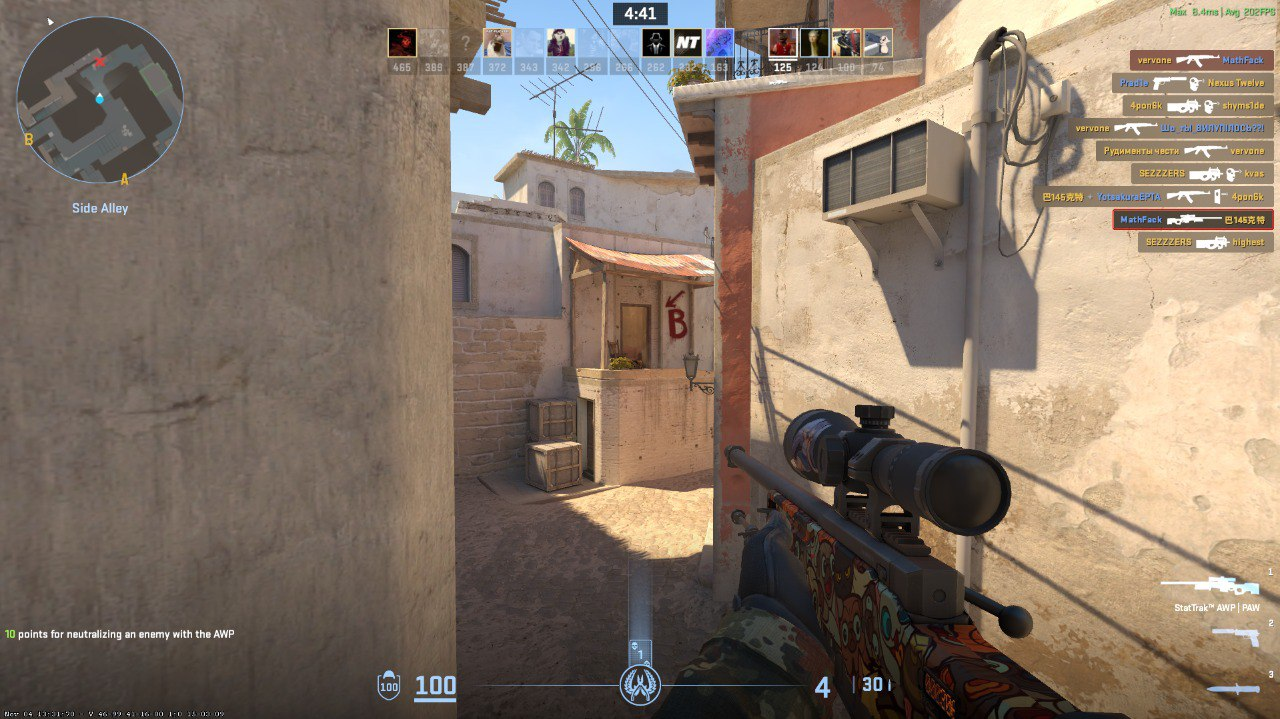
In CS2, how you peek is often more important than when you peek. Understanding the difference between a wide peek and a close peek can be the key to winning duels.
Wide Peeking
With a wide peek, the player aggressively moves out from cover, traveling a significant distance and “flying past” the opponent’s standard crosshair placement. This type of peek disrupts your opponent’s aim, especially if they pre-aim near the corner.
Strengths of wide peeks:
- Highly effective against players holding passive angles
- Throws off the aim of AWPers and other snipers
- Gives a timing advantage when executed sharply and confidently
When to use:
- You’re confident the opponent is far away and expecting a standard peek
- You want to catch a sniper off-guard
- Playing aggressively to control the tempo
- Mixing up dynamics after a series of jiggle or shoulder peeks
Pro tip: Wide peeks become especially strong after audio or visual distractions — flashes, smokes, or fake steps. The opponent adjusts their crosshair, and your sudden appearance becomes a deadly surprise.
Close Peeking
A close peek is a small, controlled movement where the player clears an angle step by step, showing minimal model. It’s the safest way to check positions but also the most predictable.
Strengths of close peeks:
- Minimal risk; excellent for gathering information
- Essential on T-sides when clearing angles one by one
When to use:
- Unsure if the opponent is holding an angle
- Slowly checking vertical or horizontal angles
- Need to spot enemies without direct engagement
- Preparing an execute and clearing space safely
Combining Wide and Close Peeks for Maximum Effect
The biggest mistake players make is using only one type of peek. Close peeks make you predictable; poorly executed wide peeks leave you exposed. The best approach is to mix techniques so the opponent can’t anticipate your movement.
Ideal sequence:
- Bait a shot with a jiggle or shoulder peek
- Gather information → make a decision: use close peek to check, wide peek to secure a kill
- If the opponent misses — a well-timed wide peek almost guarantees a frag
Crosshair Placement

Proper crosshair placement is the foundation of all duels in CS2. While jiggle peeks, close peeks, and wide peeks give you timing, crosshair placement gives you kill speed. The less you need to move your mouse at the moment of contact, the higher your chance of winning the duel.
The main rule: Always keep your crosshair at head level before you even see your opponent.
This means:
- Don’t aim at the ground
- Don’t drag your crosshair along walls
- Position your crosshair where your opponent’s head is likely to appear during a peek
What to use as a reference:
- Door frame height
- Model height behind boxes
- Standard “head levels” on different maps
- Anticipating how the opponent might peek (close, jiggle, or wide)
Players who enter a duel with their crosshair already ready win about 80% of the time.
Practical Situations Common in Matches
Mirage
- Underpass → Mid When climbing the ladder:
- Keep your crosshair 2–3 pixels above the window center
- Slightly to the right if expecting an AWP in window
- Slightly left if expecting a player on catwalk
- Common mistake: dragging the crosshair along the ladder → requires a sudden flick up
- Ramp → Default / Triple When exiting A ramp:
- Pre-aim at head level of the player behind Triple
- If expecting someone behind Default, keep the crosshair slightly lower and to the left
- Smooth crosshair arc is key, not a sudden movement at contact
- Short → Connector Duel Moving through Short:
- Keep crosshair at head level of potential connector peek
- Adjust height gradually while climbing stairs
Inferno
- Banana → Car / Sandbags Duel On Banana:
- Aim at head level near Car
- Micro-adjust left towards Sandbags
- Trajectory matters — the head behind Sandbags is higher than behind the car
- Mid → Boiler / Short Swing Moving through Mid to Boiler:
- Keep crosshair at head level slightly right of the doorSmoothly transition to Short corner
- Many players aim too low because of the road slope
- Apps → Pit / Balcony Exiting Apps:
- Head level for the first player appearing on BalconyThen higher if expecting a headshot angle in Pit
A flick shot is a fast, controlled movement of the crosshair toward a target, usually for an instant shot. Flicks are essential when:
- The target appears unexpectedly
- You need to quickly cover an angle
- The opponent holds a tight angle and pre-aiming wasn’t enough
A properly executed flick minimizes the distance between your current crosshair and the enemy’s head, increasing your duel win chance.
How to Flick Shots Correctly:
- Micro-movements: Make short, precise mouse swipes without overshooting. The goal is to hit the head, not the body.
- Return to neutral position: After each flick, reset your crosshair to where you expect the next enemy. This speeds up reactions and reduces misses.
- Control speed: Flicks should be fast yet smooth to maintain accuracy.
Counter-Strafe

Counter-strafing is one of the core movement mechanics in CS2, allowing you to instantly stop and fire with full accuracy after moving. Without mastering counter-strafing, any fast peek can turn into a miss, especially at medium and close ranges.
We wrote about movement mechanics in CS2 in this article.
Key stopping mechanic for a precise first shot
In CS2, your first shot is only accurate when your model is completely stopped. Counter-strafing works like this:
- Move in one direction (A or D)
- Immediately tap the opposite key (D or A) — this instantly stops your model
- Fire your first shot, which will be perfectly accurate
This is critical in duels, where every bullet counts. Without counter-strafing, you’re shooting “on the move,” drastically reducing your chance to hit the head.
How to “Catch” the Opponent’s Model Quickly
Counter-strafing not only allows precise shooting but also helps you catch the exact moment the enemy appears:
- Use jiggle peeks or shoulder peeks to force the opponent to show their head
- Instantly stop with counter-strafe
- At this point, you’re ready to flick or line up your crosshair on the head
Combine this with micro-flicks and proper crosshair placement — it almost guarantees winning the duel.
Ideal cycle: move → counter-strafe → first shot → micro-adjust → repeat
Duels on Real CS2 Maps

Practicing duels directly on competitive maps allows you to transfer skills to matchmaking as accurately as possible. These micro-scenarios replicate real in-game encounters, improve angle awareness, timing, and help predict opponent behavior. Below are the best zones for duel training on the most popular CS2 maps.
Mirage — Duels in Under, Connector, Palace
- Under: Train on tight angles and quick reactions to enemies coming from Mid or Window. These micro-scenarios develop the ability to work with limited visibility and minimal peeks.
- Connector: Ideal for practicing both wide and close peeks, as well as counter-peeks at different heights. Excellent for refining crosshair placement and timing.
- Palace: Short and medium-range duels with frequent flick shots on exit. Trains reaction, model positioning, and fast decision-making when pushing A site.
Inferno — Banana, Apartments, Mid
- Banana: One of the best areas for duels. Trains grenade control, early peek timing, and jiggle peeks against AWPs. Micro-scenarios here teach dominance over positions.
- Apartments: Close-range duels with many tight angles. Practicing here develops strafing shooting and reaction to sudden enemy appearances.
- Mid: Trains versatile duels at medium range, effective for counter-strafing, first-shot accuracy, and reading opponent movement.
Dust2 — Long, Short, Doors
- Long: Long-range duels, testing crosshair stability and sniper engagement skills. Great for practicing peek timing and flick shots.
- Short (Catwalk): Medium-range duels with varying heights. Micro-scenarios train proper crosshair positioning and fast micro-flicks.
- Doors (Mid Doors): Quick reactions in tight spaces. Perfect for practicing peek timing, jiggle peeks, and instant crosshair adjustments.
How Pro Players Structure Their Training Day
The xplay.gg team summarized typical pro training routines. On average, all players follow a similar principle:
- Warm-up: Light aim training in Aim Lab or Aim Botz, micro-flicks, tracking
- Duel micro-scenarios: 1v1 maps or Workshop maps, working on angles and timing
- Deathmatch (DM): Develops overall reaction speed, shooting moving targets, and adapting to unpredictable situations
- Mixes / Competitive rounds: Apply skills in real conditions, analyze mistakes, and adjust map behavior
Pro players alternate micro-scenarios with DM to transfer precision and timing into real firefights, rather than staying only on training maps.
Conclusion
Duels are the foundation of effective aim in CS2. Proper use of jiggle and shoulder peeks, wide and close peeks, crosshair control, and counter-strafing allows players to practice real in-game situations with minimal risk. Combining micro-scenarios on Workshop maps, flick-shot training, and practice in 1v1 or DM accelerates the development of accuracy, timing, and reaction speed.

